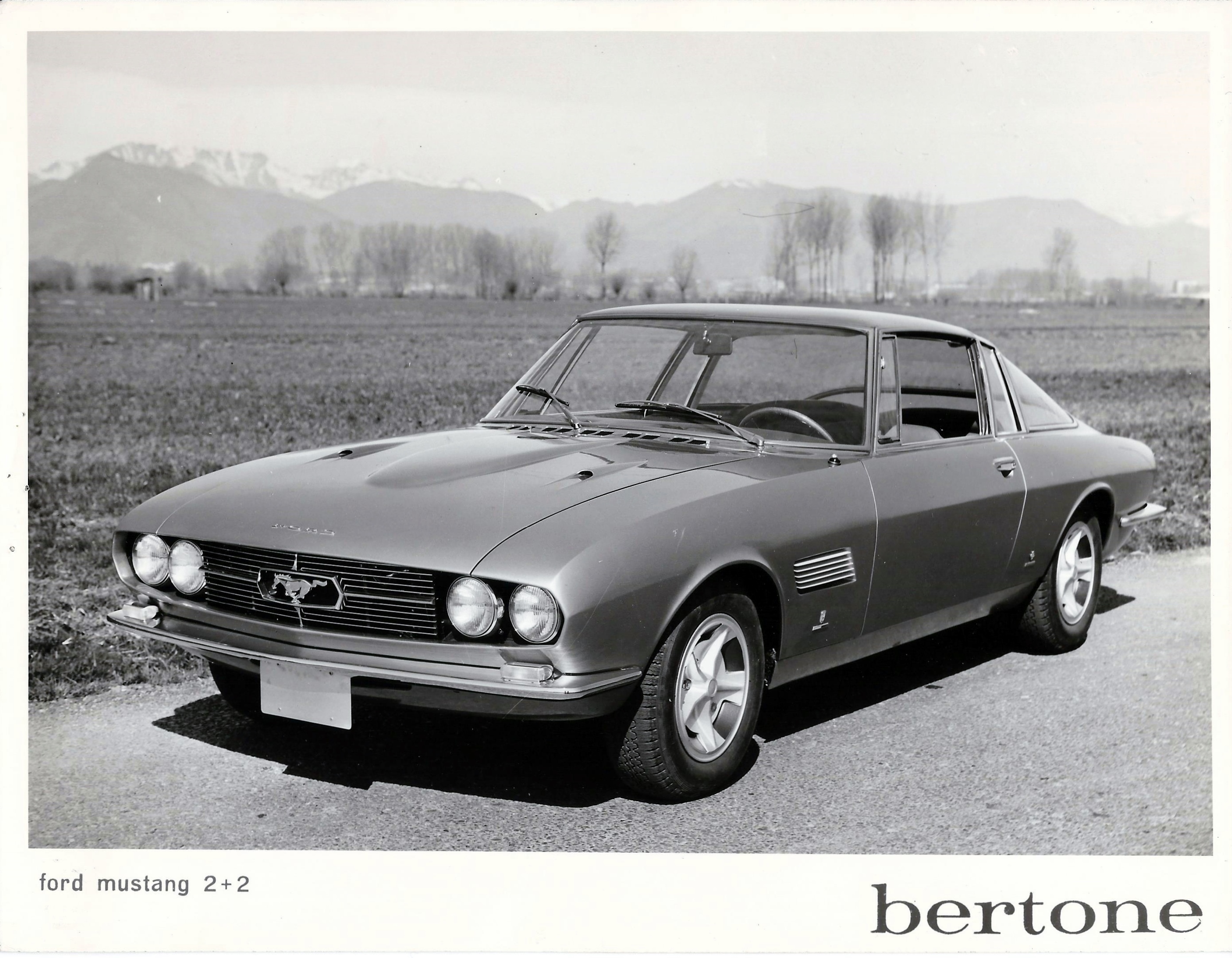Automobile Quarterly was a prestigious magazine published from 1962 to 2012. Automotive Quarterly’s publisher was L. Scott Bailey, a veteran Public Relations consultant and automotive enthusiast did lots of interesting projects over the years.
Bailey purchased a 1965 Mustang – then the darling of the nascent pony car class – and convinced Alitalia to fly the car to Italy (as a partial sponsor of the project), where Carrozzeria Bertone would be commissioned to ‘restyle’ it with a European flair.
No mechanicals were to be changed. The car had to be fast-tracked to make it back to the states for the New York Auto Show. The colour had to be changed from its production red to something more classic and continental.
The Mustang that was delivered to Bertone was a fastback 2+2 Mustang (but not a GT), with a 289 cu. inch V8, a four-speed transmission, wire hubcaps and whitewall tyres. Nuccio Bertone and staff looked over the pony car and set to work. Bertone had already tapped one of his new designers to spearhead the project: Giorgetto Giugiaro.
Giugiaro’s solution was to aesthetically lighten and streamline the Mustang’s chunky form. At the front, he redesigned the body to sit lower on the chassis, and gave it a lower, sloping nose. This meant cutting down the radiator in defiance of Bailey’s orders to allow the sheetmetal to sit over the V8 engine assembly. Also necessary, were three “power bulges” in the hood, with two sporting small vents. This was a bit of Bertone sleight-of-hand as the vented bulges were actually over the shock absorbers. The cowl was also lowered by an inch.
The front mask of the Mustang acquired quad headlights hidden behind retractable covers that extended the pattern of the grille across the front of the car. The Mustang symbol, centred on the fascia, was about the only recognizable piece from the original car.
At the glasshouse, the sail panels of the Mustang fastback were replaced by a wraparound rear window that looked like the Plymouth Barracuda of the time. Roof pillars were whisper-thin allowing for more glass. The small rear windows by the rear seats actually visually dropped – the only Mustang to ever have such a feature. The roof was stainless steel; another trick to visually lighten the car.
The interior was redesigned and wrapped in caramel-coloured vinyl. The standard gearstick was reused, but two elements of the factory Rally Pac option (clock and tachometer) were moved from their central position at the steering column to occupy a prominent position in the centre stack The steering wheel was rimmed in wood as, was the centre horn button which sported the AQ quatrefoil emblem. In the rear, the jump seats folded down to create a luggage shelf.
The factory stock wheels, tyres, and hubcaps were jettisoned in favour of a set of smaller Campagnolo 6×14-inch wheels designed by Bertone and cast of a light Elektron magnesium alloy. These were wrapped by black wall radials, replacing the standard whitewalls. Simple ‘moon’ hubcaps were placed on the wheels. The car was painted a ‘metallic light blue’ according to Bertone, a sort of silvery blue/green, which had an elegance that matched the lines of the redesigned car.
Content from Car Design News




